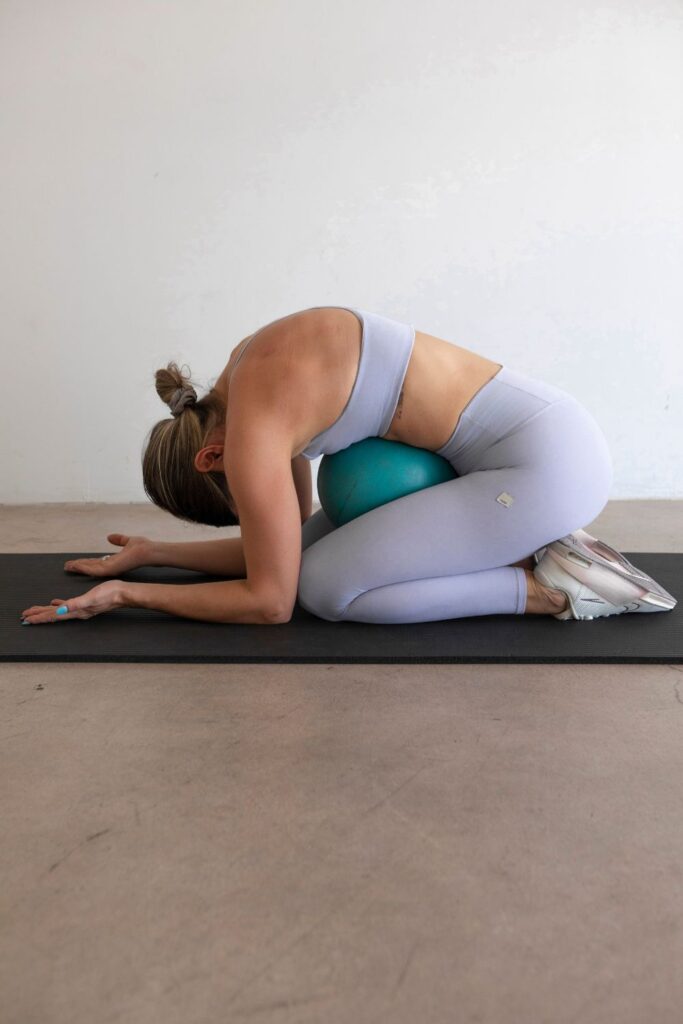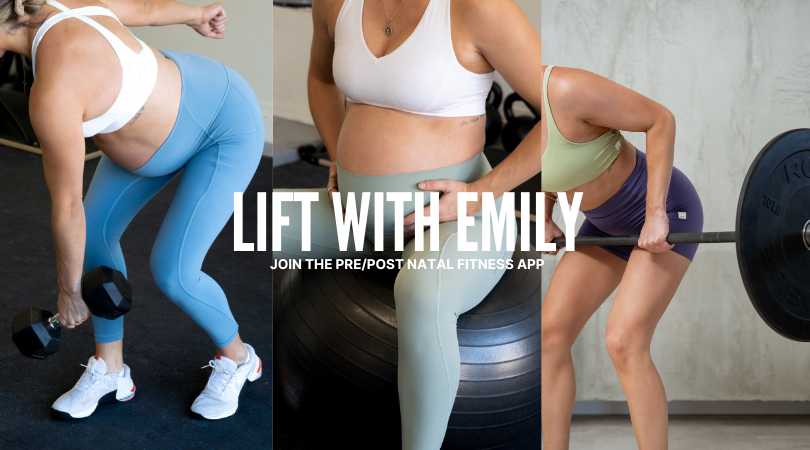Diastasis recti is often talked about in terms of the “core”—specifically, the abdominals. But what if your core isn’t the main issue? What if lingering doming or tension in the upper portion of your diastasis is being driven by what’s happening above it—your ribcage, breath mechanics, and upper body mobility?
Let’s break this down and shift the focus to something often overlooked: rib mobility and posterior expansion.

Diastasis Recti: A Normal Adaptation, Not a Problem to Panic About
First, a reminder: Diastasis recti is a normal and necessary adaptation during pregnancy. The connective tissue between the two sides of the rectus abdominis (your “six-pack” muscles) stretches to allow room for a growing baby. That space, or “gap,” may remain postpartum — especially around the navel or above — but this doesn’t always mean there’s something wrong.
Healing diastasis isn’t just about closing the gap. It’s about restoring function, pressure management, and deep core coordination. And if you’re seeing more doming or lack of tension higher up near the ribcage, the issue might not be your abs at all — it could be your ribs.
Why Rib Mobility Matters
Your ribcage isn’t just a protective shell — it’s a dynamic, mobile structure that directly influences how your core functions. It expands and contracts with every breath, shifts position during movement, and helps manage intra-abdominal pressure. But when your ribcage becomes stiff, flared, or “stuck” in an extended position — which is common postpartum — it disrupts the entire system.
Here’s how that plays out:
- Intra-abdominal pressure becomes mismanaged: When the ribs stay flared or in a state of inhalation, pressure from breath and load gets pushed forward and outward. Instead of being distributed 360° — through the diaphragm, abdominal wall, and pelvic floor — it concentrates in the front, often right where upper abdominal separation exists. This can delay healing and reinforce coning or doming.
- Core activation is compromised: The deep core system — especially the transverse abdominis — depends on rib-pelvis alignment to engage properly. If the ribcage stays elevated or disconnected from the pelvis, your core can’t generate tension effectively. This can lead to compensations like upper ab gripping or back extension strategies that further widen the gap at the top of the linea alba.
- Breathing mechanics suffer: Shallow, chest-dominant breathing becomes the norm when rib mobility is limited. This not only reinforces rib flare and forward pressure, but it also disrupts the natural coordination between your diaphragm and pelvic floor — two key players in core recovery.
Improving rib mobility isn’t just about better posture — it’s about restoring the movement potential of your ribcage so that your entire core canister (diaphragm, abdominals, and pelvic floor) can work in sync. With more access to posterior expansion (breathing into the back of the ribs), you reduce the forward pressure on the abdominal wall, create space for deeper core engagement, and give your body the conditions it needs to rebuild from the inside out — especially in the upper portion of a diastasis.
The Role of Posterior Expansion
Posterior expansion refers to the ability of the backside of your ribcage — especially around the lower ribs and thoracic spine — to expand during inhalation. It’s a natural, essential part of breathing. But during pregnancy, the growing belly, increased breast size, and postural shifts tend to pull everything forward. Breathing becomes chest- and belly-dominant, and the ability to send breath into the back body often disappears. This leads to what’s called an anterior bias — where breath, movement, and muscular tension are concentrated in the front of the body.
Why does that matter for core recovery — and especially for upper diastasis?
Without adequate posterior expansion:
- The front body takes over. Without space in the back ribs, the front of the core — especially the upper abdominals — starts to overwork. This often shows up as upper ab gripping, shallow breathing, and visible coning or doming during exertion.
- Pressure isn’t managed well. Your deep core system is designed to handle intra-abdominal pressure in all directions — not just forward. When you can’t expand into the back ribs, pressure builds in the path of least resistance (usually straight through the upper abdominal wall), making it harder to restore tension across the linea alba.
- Alignment becomes harder to maintain. Posterior expansion helps naturally stack the ribcage over the pelvis — a foundational piece of core coordination. Without it, you’re more likely to default into a rib flare, extended spine, and compensatory movement strategies that keep the upper core “offline.”
Encouraging breath into the back ribs helps create space, restore balance, and activate the deep stabilizers of your core more effectively. It helps shift the focus away from bracing and gripping, and toward expansion, control, and reflexive engagement. For many postpartum individuals, regaining posterior expansion is the missing link when upper diastasis won’t resolve — no matter how many core exercises they’ve tried.
8 Exercises to Support Upper Diastasis Healing Through Rib Mobility + Posterior Expansion
Each of the following exercises helps you reconnect breath, ribs, and deep core. They aren’t just “ab” exercises — they work at the system level.
1. 90/90 Breathing with Reach
This foundational position places the body in a stacked, supported shape where the pelvis and ribs can align. The reach adds slight flexion and promotes expansion through the back and sides of the ribcage.
Why it helps:
- Reinforces rib cage mobility
- Expands the posterior and lateral ribs
- Teaches a coordinated exhale and deep core activation without gripping
- Sets the stage for every other movement that follows
2. Supine Thoracic Rotation with Band
Lying on your side with knees bent, this rotation encourages movement through the thoracic spine and the rib cage. Using a resistance band adds feedback and core integration.
Why it helps:
- Mobilizes a stiff upper spine (especially for those stuck in extension)
- Improves rib rotation and mobility
- Encourages breath to flow more fully during movement
- Adds a gentle core challenge in a safe, supported position
3. Bent Over Dumbbell Reciprocal Row
In a hinged position, you alternate rowing one dumbbell at a time while maintaining core control and breath. The reciprocal motion challenges thoracic rotation, reinforces ribcage stacking, and engages the obliques and lats without flaring the ribs.
Why it helps:
- Trains thoracic rotation and ribcage control under load
- Enhances posterior expansion through breath in a hinged position
- Builds oblique-lat coordination to support deep core activation
- Reinforces neutral spine and rib alignment during movement
4. Overhead Press with Band or Lat Pulldown Cue
Overhead movement challenges rib positioning and breathing mechanics. Using a banded lat pulldown cue during the press helps activate the back body and avoid rib flare.
Why it helps:
- Strengthens overhead mobility while maintaining rib control
- Reinforces rib cage stacking with effort
- Builds coordination between upper body and deep core
- Integrates breath into functional lifting patterns
5. Tall Kneeling Band Side Bend
In a tall kneeling position with a resistance band anchored to the side, you reach up and over, allowing the ribs to expand laterally while resisting pull from the band. The movement combines controlled lateral flexion with breath to open the side body and improve rib mobility.
Why it helps:
- Encourages lateral rib expansion and mobility
- Builds core control through breath and resistance
- Reduces stiffness in the thoracolumbar region
- Reinforces rib-pelvis alignment in a stacked position
6. Kneeling Cable Rotation
In a tall kneeling position with the cable at chest height, you rotate through the ribcage while maintaining a stacked pelvis. The movement emphasizes thoracic rotation and anti-extension control, helping reintroduce rotational breath and core engagement.
Why it helps:
- Improves thoracic rotation and mid-back mobility
- Trains controlled ribcage movement without flaring
- Encourages posterior and lateral expansion during rotation
- Builds oblique and deep core engagement through resistance
7. Wall Sit with Reach and Exhale
The wall sit positions your body in a stacked alignment, allowing you to connect ribs to pelvis while loading the lower body. Adding a reach and exhale helps bring the ribs down and back while maintaining pressure control.
Why it helps:
- Teaches integrated posture and pressure management
- Encourages posterior expansion under load
- Builds strength and endurance with intentional breath
- Helps retrain core + pelvic floor coordination in a functional position
8. Side-Lying Rib Smash with Top Arm Reach
Lying on your side with feet anchored into the wall, you use a ball or roller under the ribs to release tension while reaching the top arm forward. This setup promotes posterior rib expansion, lateral core engagement, and improved ribcage movement with breath.
Why it helps:
- Releases tension around the lateral ribs and upper obliques
- Promotes posterior and lateral expansion through the ribcage
- Reinforces rib-pelvis stacking with wall reference
- Enhances breath access and reduces upper ab gripping
9. Quadruped Rockback Breathing
In a supported child’s pose, you focus on slow, intentional breaths directed into the back and sides of your ribcage. With arms extended and hips back, this position promotes posterior expansion and helps reset breathing patterns.
Why it helps:
- Encourages 360° breath with emphasis on posterior rib expansion
- Relieves tension in the spine, lats, and upper back
- Reinforces diaphragmatic breathing in a relaxed position
- Creates space and decompression through the ribcage
Final Thoughts
If you’re stuck in a cycle of breathing drills and supine deep core exercises and not seeing progress with your upper diastasis, it’s time to zoom out. Your ribs must move and your breath needs to reach your back body—if you want your deep core to truly reconnect and respond.
By addressing rib mobility and posterior expansion, you’re not just chasing aesthetics or “closing the gap.” You’re building a stronger, more integrated, and functional system — one breath at a time.

I’m deeply passionate about helping women feel strong, informed, and confident through every stage of motherhood. You deserve more than just a list of do’s and don’ts or generic modifications. With years of hands-on coaching across all kinds of athletes and clients, I blend real-world experience with specialized pre and postnatal knowledge to create strength programs that go far beyond basic adjustments. This is high-level, accessible training - built for your body, your season, and your goals
EXPLORE MORE POSTS